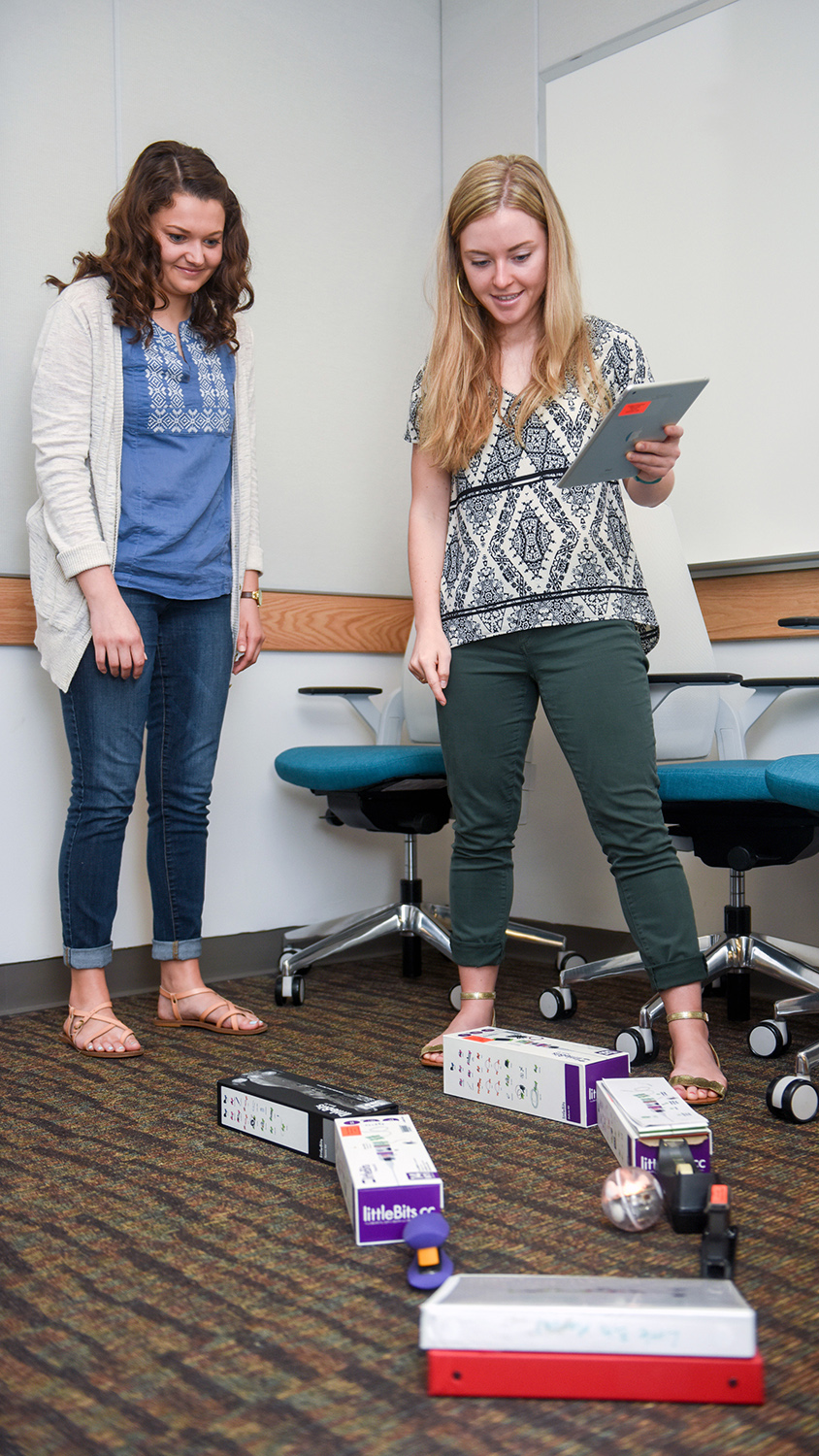A Day in METRC
Future teachers learn how to integrate technology in to classroom instruction at the NC State College of Education’s Media and Education Technology Resource Center (METRC).
Many teachers embrace the art of “making” — creating through technology — to get students engaged in the classroom. College of Education students gained a few insider tips on integrating this concept into their future instruction with the help of METRC’s MakerSpace.
“Due to the importance of technology in our world, and in the world of our future students, it is important for us to know how to use these new technologies,” said Casey Bohnenblusch, an elementary education major. “As teachers, we will be able to help students explore what’s out there, and expose them to opportunities they can use in their future careers.”
Before METRC closed for summer renovations, we followed a group of elementary education majors taking ELM 420: Teaching Science in the Intermediate Grades as they spent a class learning about METRC’s resources and how to use them in their lessons. Through a series of hands-on activities, these pre-service teachers learned how to use new technologies to better engage their future students.

Senior elementary education majors Kathryn Moore and Ashley Holland and junior elementary education major Sara Bowen learn how to use Tinkercad (a CAD design program) and Thingiverse (a digital design website) to jumpstart a 3-D printing exercise. These pre-service teachers reflected on learning how to introduce students to new technologies, and how new tools can get students excited about making, whether as part of a whole-class demonstration, activity for independent work, part of a larger inquiry learning segment and more.
“There are so many resources out there to give students a leg up on learning that just didn’t exist for previous generations,” said Holland. “With technology being a part of students’ everyday lives, they’re much more receptive to learning something when they can connect it to what they already know.”

After solving a series of critical thinking puzzles, senior elementary education major Delaina Hawkins and junior elementary education majors Erin Sweeney, Olivia Reedy, Emily Lloyd and Whitney Illing celebrate after unlocking the BreakoutEDU box and earning a prize: reading resources. These resources included books that the pre-service teachers would read in their future elementary school classrooms.
Breakout EDU is an immersive games platform for learners of all ages. In Breakout EDU games, players work collaboratively to solve a series of critical thinking puzzles in order to open a locked box. Learning about literacy with Breakout EDU helps pre-service teachers bring gaming — and a heightened interest in reading together — into the classroom.

Graduate teaching assistant Maryam Khan talks about the importance of reading for engagement and inquiry with junior elementary education major Rachel Cummins and fellow classmates.
“Emerging technology in classrooms enables children to see the importance and benefits of using technology as a learning tool,” said Khan, who has three years of classroom teaching experience. “At METRC, students learn how these devices to make learning more engaging for students. The workshops provided by METRC staff were beneficial for me when I planned my lessons. Everything I learned about integrating circuits or spheros in my classroom helped make my lessons more fun and interesting to students. Students enjoyed learning through explorations and inquiry.”

Junior elementary education majors Rachel Cummins and Madison Bradshaw work together to decipher clues in the BreakoutEDU immersive games platform to solve a puzzle providing a new classroom resource. In the classroom, students use BreakoutEDU to learn and enhance their teambuilding, communication, critical thinking and reading comprehension skills.
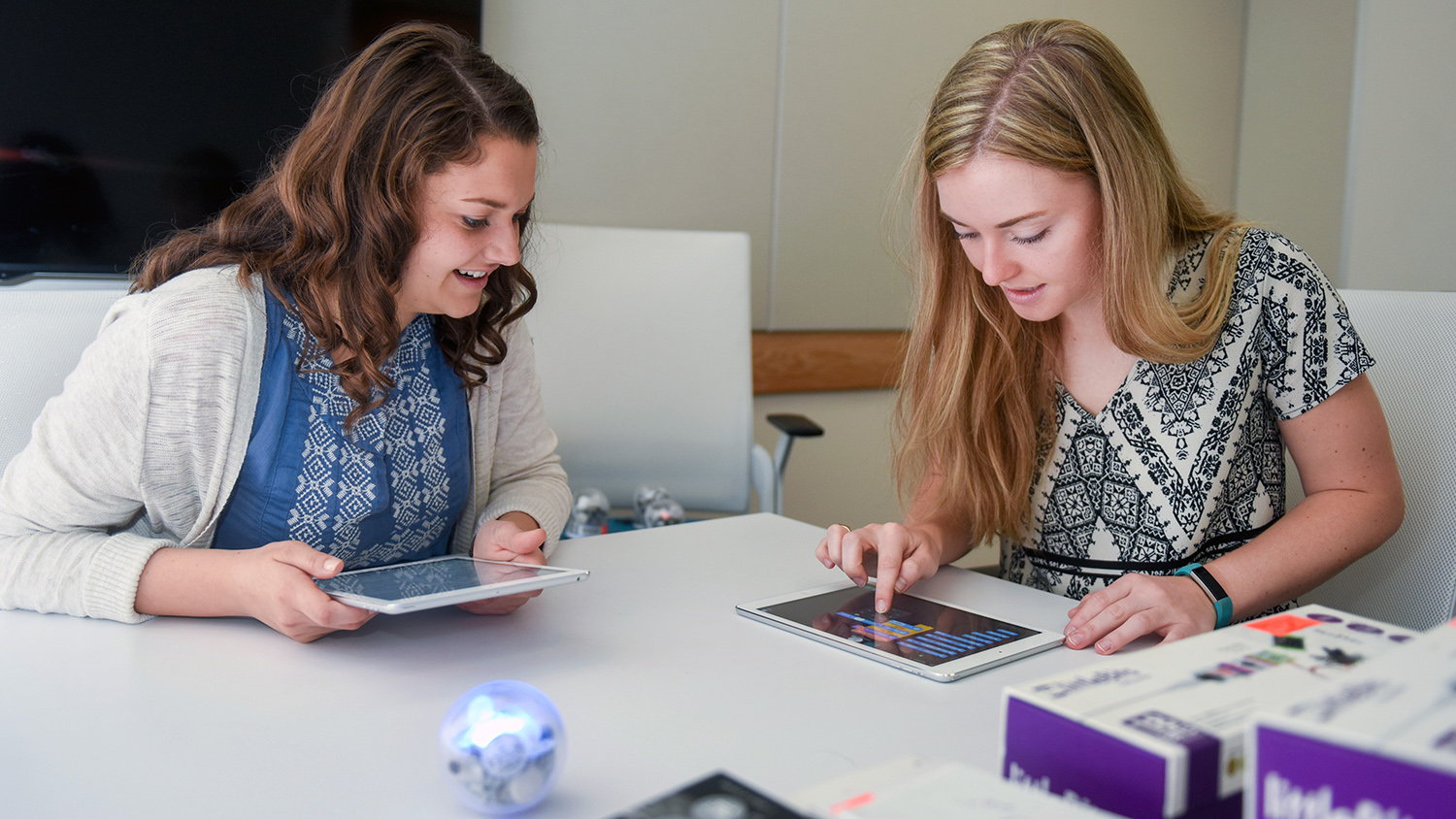
Junior and senior elementary education majors Sara Bowen and Ashley Holland learn to take advantage of the technology at their fingertips. They program and control movement in the blinking and spinning Sphero robot using code generated on iPads, making it go right, left, up, down and spin.
Once the pre-service teachers completed their initial robotics and circuitry lesson, they built an obstacle course from objects found in METRC. From racing up a ramp to dodging desks, they quickly code their Sphero to race at a dizzying pace around the room.
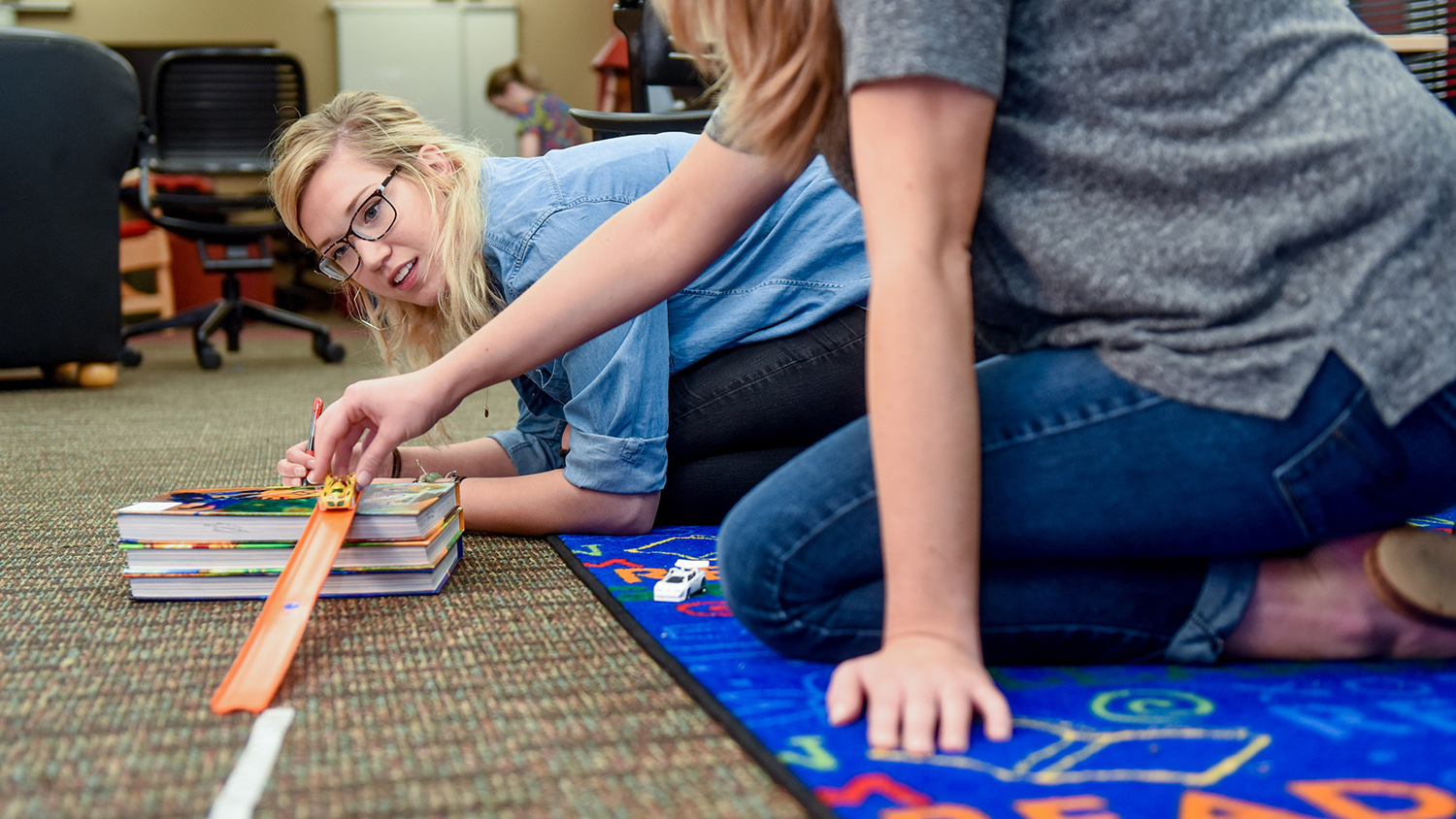
You can find any public school textbook across the state of North Carolina in METRC. Here, they provide a slight boost to junior elementary education major Lauren Stone’s Hot Wheels car.
Stone and classmates use Mattel’s fourth grade speedometry math and science curriculum instructions to make their cars go fast and get their future students up to speed on STEM education. A study by Mattel showed that in one school district using a speedometry lesson, girls’ negative emotions about learning science and math decreased.

Elementary education majors Kayleigh Hooper, Bridgette Bryson and Casey Bohnenblusch use METRC’s MakerSpace to explore 3-D printing with the Tinkercad and Thingiverse programs. Put to use in elementary school classrooms, these programs give teachers a unique way to encourage classroom collaboration, student-led inquiry and discovery, and instill a lifelong love of STEM learning in students.
“The range of technology that students are used to is so advanced compared to just 10 years ago — today’s elementary school students are growing up using iPhones,” said Hopper. “Most jobs also require you to use technology in some form. So, I think that incorporating that into my classroom will help students become adults more prepared for the future.”
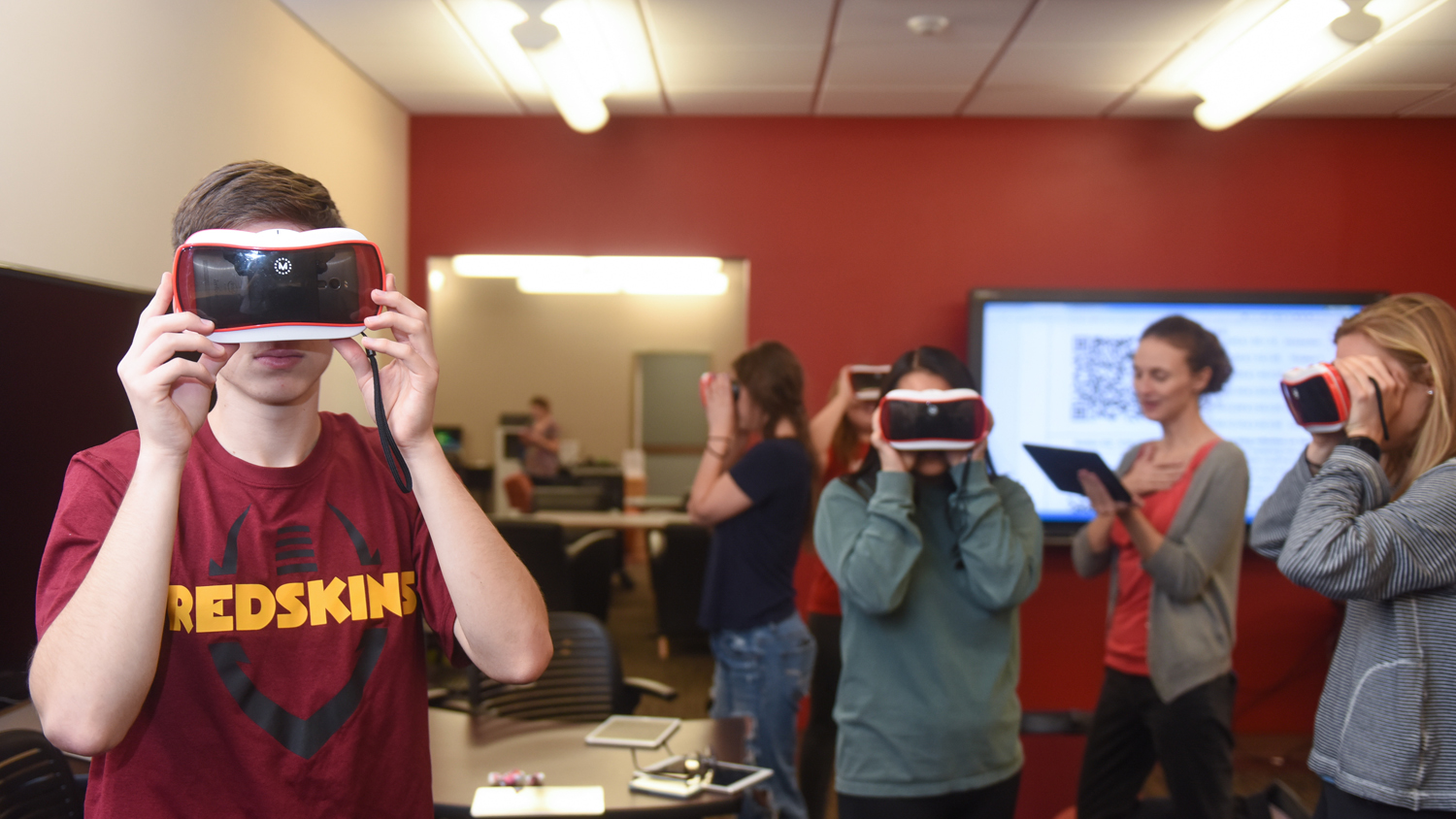
Taking learning to the next level with virtual reality becomes a possibility with a few interesting tools. Senior elementary education major Steven Lemmons and junior elementary education majors Christine Kim and Alex Atchison use smartphones and VR headsets to interact with the “Google Expedition Sharks!” program.
The program gives users the feeling of deep sea diving with a variety of fascinating shark specimens, along with the chance to learn new facts about the sea creatures while listening to an instructor-directed lesson.
“In the College of Education, I’m learning different ways to incorporate technology while teaching science and engineering,” Lemmons said. “I hope that a lot of what’s here in METRC can teach my students about direction, magnitude in vectors, percentages and teamwork.I also hope that through technology, they can have a good time learning.”
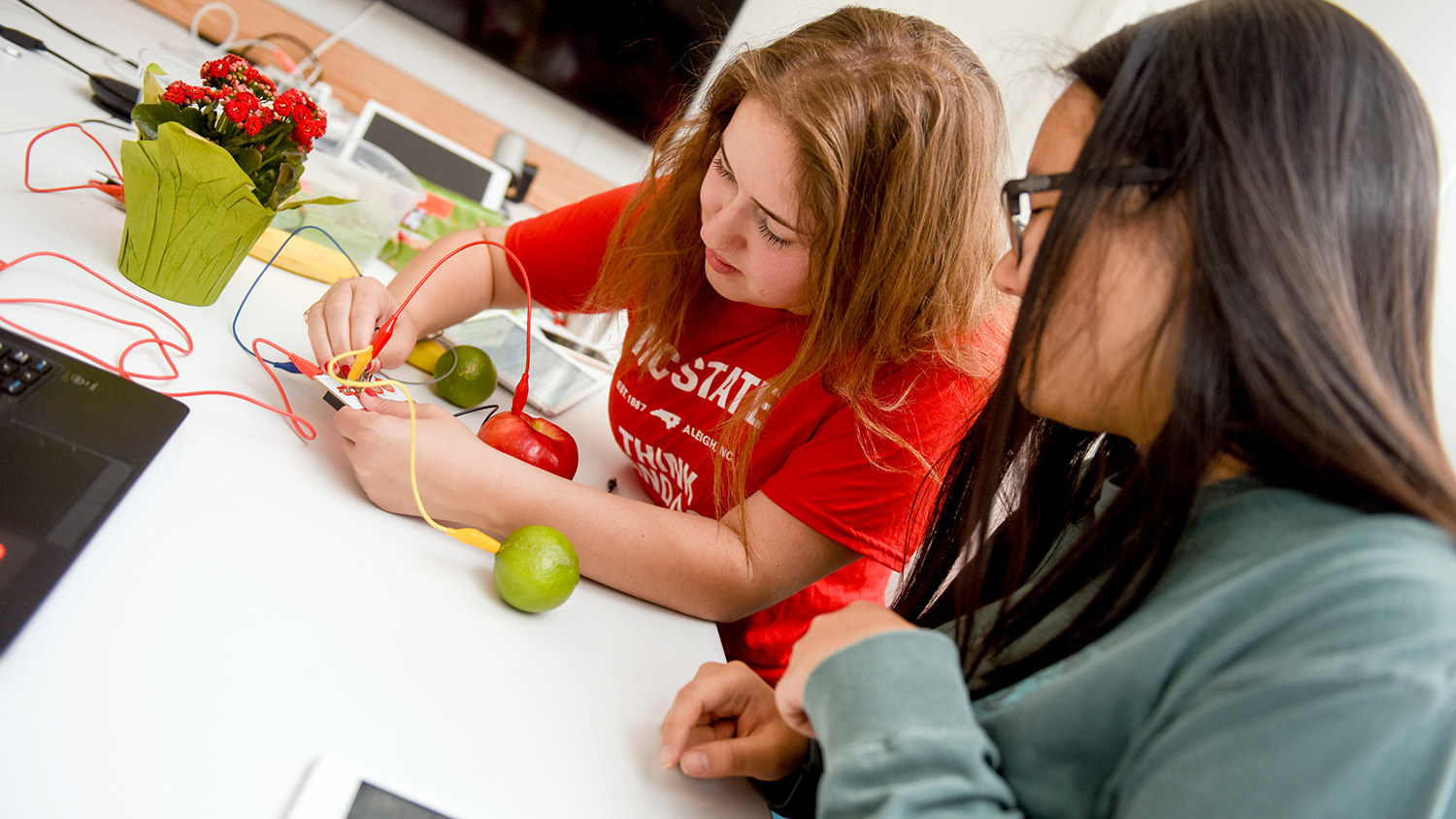
Junior elementary education majors Chase Lane and Christine Kim know that METRC’s technological resources are the apple of any pre-service teacher’s eye. Using Makey Makey technology, they create a keyboard using fresh fruit and alligator clips, and a game controller to play popular computer games like Tetris, Canabalt and Platform Rush. By clicking on the fruit, they learn not only about STEM integration into classroom learning, but also about critical thinking and problem solving.
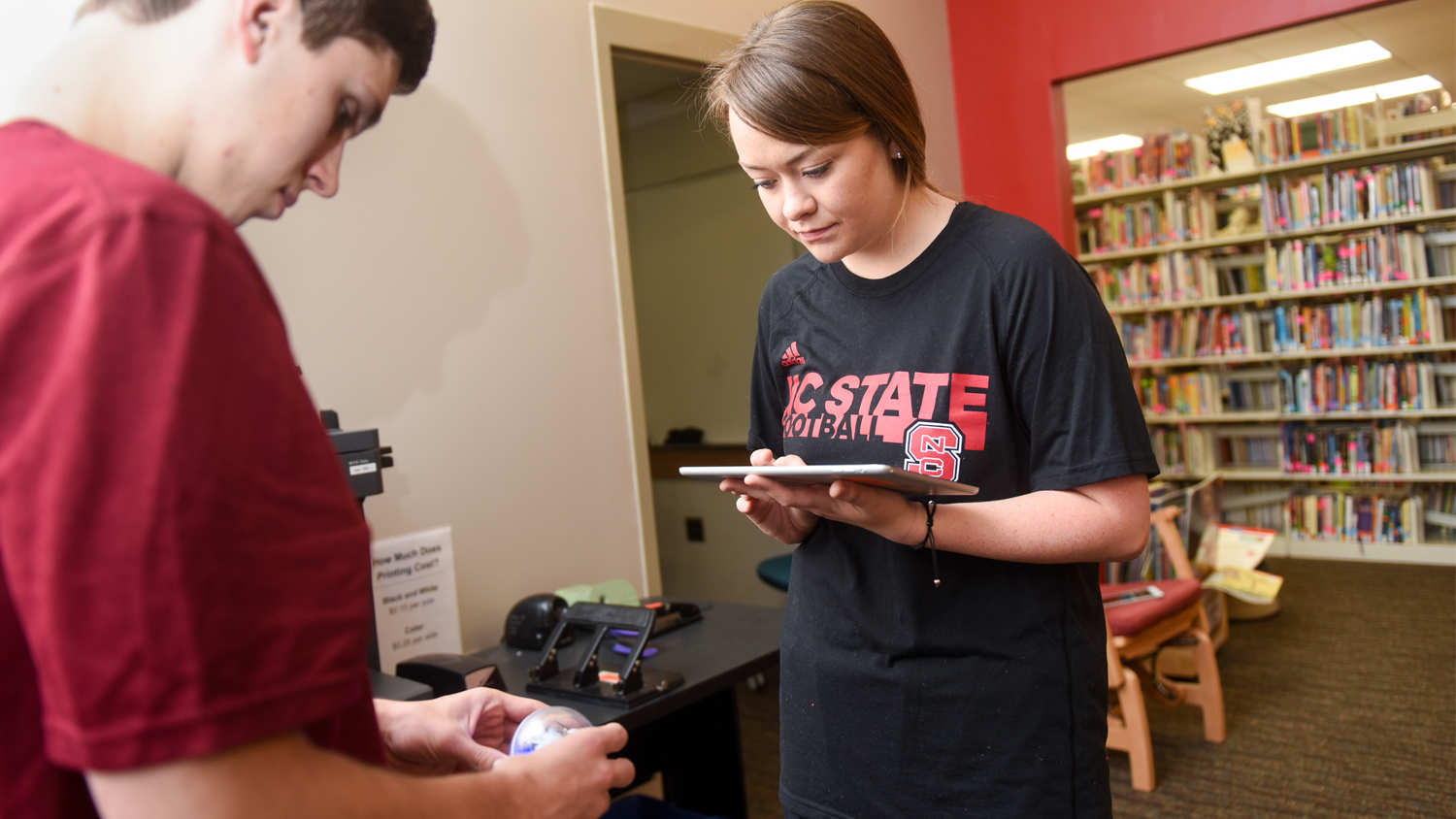
Junior and senior elementary education majors Rachel Cummins and Steven Lemmons explore robotics and circuitry with the Sphero programmable robot. Pre-service teachers learning to use technologies like Sphero find a new avenue to introduce students to a wide range of fun and engaging STEM learning opportunities.
“Learning how to incorporate technology into your classroom and letting students learn in a more fun and engaging way can be more effective than us telling them how something should work,” Cummins said. “If you just lecture the whole time, it is not as engaging as these activities are, because you get students way more involved and interested in activities that you participate in with the class.”
James Minogue, associate professor in the Department of Teacher Education and Learning Sciences, director of undergraduate programs, and elementary education program coordinator, teaches ELM 420: Teaching Science in the Immediate Grades, and Kerri Brown Parker directs METRC. They designed and facilitated the activities the students participated in during the class period.
Written by Emily Packard. Photos by Becky Kirkland.
